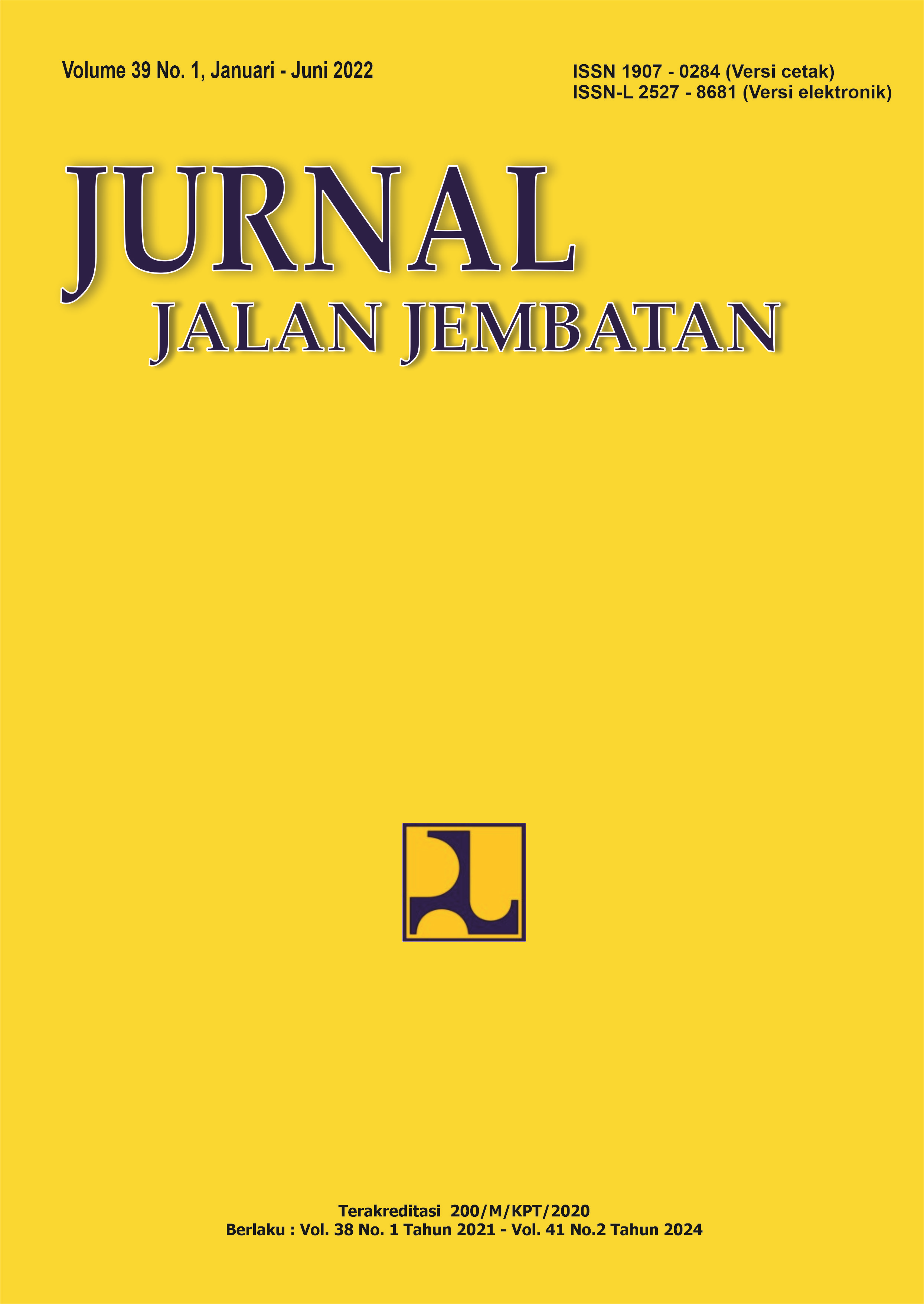ANALYSIS OF MAXIMUM KINETIC ENERGY OF ROCK FALL IN THE APPLICATION OF ROCK FENCE TECHNOLOGY
Main Article Content
Abstract
Rock fall is a very fast bedrock movement where material is released from a steep slope and moves by falling, bouncing, rolling or sliding. West Java Province has a frequency of 1129 landslides throughout 2020 which underlies the need for a study of locations that have the potential for rock fall and simulation calculations to determine the type of rock fall barrier that can be used at that location. Rock fence as a passive slope protection method as one of the rock fall countermeasures. The analysis is carried out using software to determine the most appropriate type of rock fence method. Based on the analysis, the maximum kinetic energy at Location 1, Location 2 and Location 3 was 1,630.68 kJ, 1,209.11 kJ and 397.82 kJ, respectively. Thus, the countermeasure for Location 1 can use a Category 4 rock fence with the maximum energy level value being in the range of 1500 kJ MEL < 2000 kJ, while countermeasures for Locations 2 and 3 can use Category 3 and Category 1 rock fences respectively. Further collection of slope geometry data and historical rock fall data is needed to be able to simulate various rock fall conditions, rock reflection heights and rock maximum kinetic energy so as to sharpen the analysis results.
Keywords: rock fence, rock fall classification, kinetic energy, slope protection, simulation
Article Details
Authors who publish in this journal agree to the following terms:
-
Authors retain copyright and grant the journal the right of first publication with the work simultaneously licensed under a Creative Commons Attribution License, which allows others to share the work with acknowledgment of the work's authorship and initial publication in this journal.
-
Authors may enter into additional contractual arrangements for the non-exclusive distribution of the journal's published version of the work (e.g., post it to an institutional repository or publish it in a book), with acknowledgment of its initial publication in this journal.
-
Authors are permitted and encouraged to post their work online (e.g., in institutional repositories or on their website) as it can lead to productive exchanges, as well as earlier and greater citation of the published work.
Each submitted manuscript must be accompanied by a "Manuscript Originality Statement" and a "Copyright Transfer Statement".

